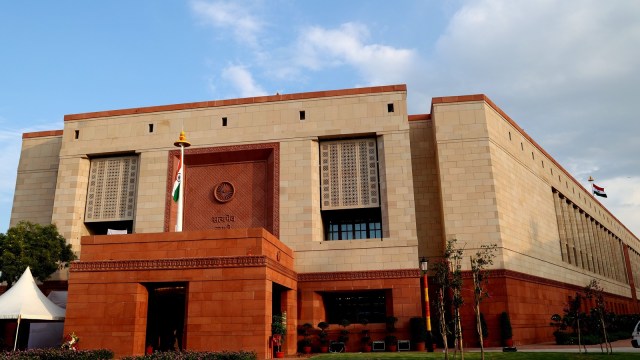
The 2024 Lok Sabha elections mark an important point of departure in modern India’s political history. And while there is much to analyse and celebrate, on one front, we have taken a step backwards. The 18th Lok Sabha will have 74 women along with 469 men. While this cohort of 74 certainly includes many powerful, gritty and diligent elected representatives, together, they comprise only 13.6 per cent of all MPs. Not only is this share abysmally skewed, it is lower than the share of women elected in the 2019 election (14.4 per cent).
If we consider the context in which the 2024 elections took place, women’s parliamentary representation should have recorded a notable improvement. After all, this was the first parliamentary election after India passed the historic Women’s Reservation Bill that seeks to reserve one-third of seats in the Lok Sabha and state legislative assemblies for women, once it comes into force.
Reservation is not enough
When the bill was passed in Parliament last year, political parties of every hue went out of their way to express their support and claim credit for the historic development. Additionally, women remained an important demographic in this election. From party manifestos and campaign speeches by top leaders, to making sense of their voting preferences, the Indian woman remained a fairly conspicuous (and somewhat enigmatic) presence throughout the long-drawn election season.
But women remained limited to voters and beneficiaries in this imagination, not so much leaders and representatives deserving equal participation across political hierarchies. Consider this: Only 9.6 per cent of all candidates in this election (and 11 per cent of candidates contesting on a party ticket) were women, according to data compiled by the Association for Democratic Reforms (ADR). This is barely up from 2019, when the share of women among candidates was nine per cent. To add insult to injury, several women who contested the polls faced misogynist remarks and jibes from their peers.
If such few women get to contest an election, their representation among those elected will likely remain marginal. Although parliaments continue to be dominated by men in most parts of the world, India lags further behind most of its peers. For instance, in 2023, 52 countries around the world held parliamentary elections — on average, 27.6 per cent women were elected, data from the Inter-Parliamentary Union (IPU) shows. In fact, globally, women comprise 26.9 per cent of all MPs currently. Before the election of the 18th Lok Sabha, India ranked 143rd among the 185 countries on this metric, as per IPU data. With this dip in women’s representation, the ranking is likely to fall further by five or six positions.
An example from Mexico
One day before counting day in India, another historic election result unfolded in a different corner of the world. In Mexico, where general elections were held to elect representatives to various political offices, Claudia Sheinbaum was elected by a comfortable majority to the top political office. This is the first time a woman has been elected as the country’s President. But the shattering of this glass ceiling is not an aberration, only the logical next step in Mexico’s journey to make its politics more representative.
Over the past few decades, propelled by grassroots feminist movements, the country has introduced and implemented a set of legislative reforms to ensure not just increased representation of women — but rather gender parity — in its politics. The law requires parity in everything, that is, in all spheres of government, and mandates that parties put forth candidate lists with gender parity across elections. As a result of these reforms, Mexico has parity in both houses of its Parliament, along with women occupying several important political offices. In 2024, the top two contenders running to be President were women, a rare development with few parallels across countries.
This is not to say Mexico is without its share of problems — political and gender-based violence remains a serious concern. But it shows that progress is possible through deliberate and thoughtful reform despite entrenched gendered norms. Several other countries have also taken steps (both small and big) to make their politics and parliaments more representative, inclusive and gender-sensitive.
We are all responsible
India has led from the front when it comes to expanding women’s political participation at the local level. It is high time that we show a similar commitment in addressing the gaps at the state and national levels. This will require reform from the top, but the ultimate onus of ensuring progress will lie on the shoulders of our political parties. This dip in women’s representation should not be trivialised. When it comes to enabling the participation of women (and traditionally marginalised groups), progress is rarely linear, and never guaranteed. Eternal vigilance is essential, and we must remain on our guard every step of the way.
The writer works at CEDA, Ashoka University and was the author of the 2022 and 2024 editions of IPU’s annual report on Women in Parliaments. Views expressed are personal
Click here for real-time updates on the Lok Sabha Election Results 2024


